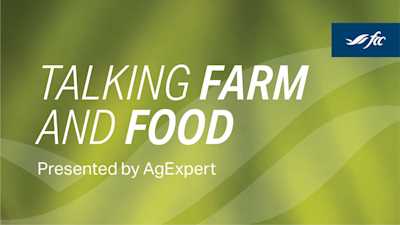Digital Farming: The Future is now

Digital agriculture is making strides, bringing innovative technology and data to farmers to make their operations run more efficiently.
Jacqueline Keena, managing director at Enterprise Machine Intelligence and Learning Initiative (EMILI), defines digital agriculture as the application of intelligent technology before, during and after on-farm production.
“Intelligent technologies are things like artificial intelligence and machine learning, and the role of technology and new innovation being integrated into production agriculture, processing and all down the value chain,” she explains.
Digital agriculture, also termed “smart farming,” can provide more and better data, thereby optimizing decision-making, as well as automate certain tasks.
For example, their research farm has about half a dozen weather stations. The data from these stations tells them which areas recently received rainfall, helping them decide where they can apply herbicide or fungicide.
Taking it a step further, EMILI has partnered with University of Winnipeg researchers to develop innovative technologies like a crop identification algorithm to identify different varieties of plants, created from a database of millions of labelled images of crops and weeds. This tool could be applied in the development of seed and spray technologies, allowing farm operators to use herbicides more precisely – increasing production and optimizing inputs.
“What it ultimately does is it frees growers up to turn their attention to more pressing or different areas of the operation, where their expertise and unique knowledge of their operations is best applied,” Keena says.
Innovation Farms
Although innovative technologies for agriculture have been around for years, the sector remains “near the beginning of this journey,” Keena says.
“There’s lots more to do in terms of full integration and adoption, and getting all of the productive value out of having innovative technology is a part of production agriculture,” she says.
EMILI’s latest flagship activity, Innovation Farms Powered by AgExpert, represents a significant step forward.
It’s located on Rutherford Farms, a 5,500-acre commercial seed farm, where industry and academics will be provided access to “leading-edge equipment, technology and production practices,” the EMILI website states. This will make it the largest such farm in Canada, and the first in Manitoba.
Innovation Farms will provide a full-scale testing environment across the entire 5,500 acres, but also 100 acres dedicated to testing and validating new hard and software technologies.
The EMILI website highlights Innovation Farms’ ability to “provide previously unavailable, and extremely valuable, insights on soil science, carbon benchmarking, weather data and more.”
Putting unbiased information into the hands of growers will help them best decide what new technologies to adopt for their own operations, Keena says.
What makes Innovation Farms different from other smart farms is that it’s demonstrating return on investment on a commercial basis, says Rutherford Farms president Rick Rutherford.
“The reality for us is if a lot of these products can’t show a continued return on investment, they won’t have a place in modern agriculture,” he says.
Because new technologies take time to test and therefore come with some risk, seeking the advice and experience of early adopters can provide reassurance. Know that this is an investment, not necessarily a quick fix.
Adopting smart farming
Rutherford has long embraced smart farming on his own operation. He estimates that his operation is at least 30 per cent more carbon efficient than it was 20 years ago – due to growing more pulses, reducing tillage, putting more organic matter back into the soil and 4R nutrient stewardship. He’s quite keen on things like tracking nitrogen efficiency, which can be accomplished through soil testing.
His operation is at least 30 per cent more carbon efficient than it was 20 years ago.
Among the innovations he’s implemented are section control, AutoPath and numerous sensor devices, to the point that there’s constant monitoring of almost every acre.
Rutherford is also big on data collection and has been compiling data on farm activities since 2014.
“That’s where the influx is coming from in sustainability. If you can’t document what you’ve physically done on your farm, it doesn’t carry validity,” Rutherford says.
Data and sustainability
The University of Alberta has also seen the value of data collection and sustainability and is undertaking a two-year project to compile a database of almost 3,000 soil samples the Alberta government has gathered from across the province since 1997.
The database project aims to support sustainable land management practices. The university proposes not only filling demands for big data in soil science, but going beyond traditional considerations like fertilizer and herbicide to explore soil health.
“Instead, we’re looking at soil health, which is more about carbon being stabilized in soil and the microbial communities that carbon supports,” University of Alberta soil scientist and project researcher Derek MacKenzie said in a statement. “Those are what make soil a functional ecosystem, and that can lead to more sustainable agriculture not just here, but globally.”
Access to this data will come through a free web-based app that’s also being developed.
AgExpert Field can help you determine which strategies and inputs deliver results, and which are underperforming. It provides the right information to help you make the best business decisions.
From an AgriSuccess article by Richard Kamchen.

How blockchain systems could help develop more effective artificial intelligence farm and food systems.
